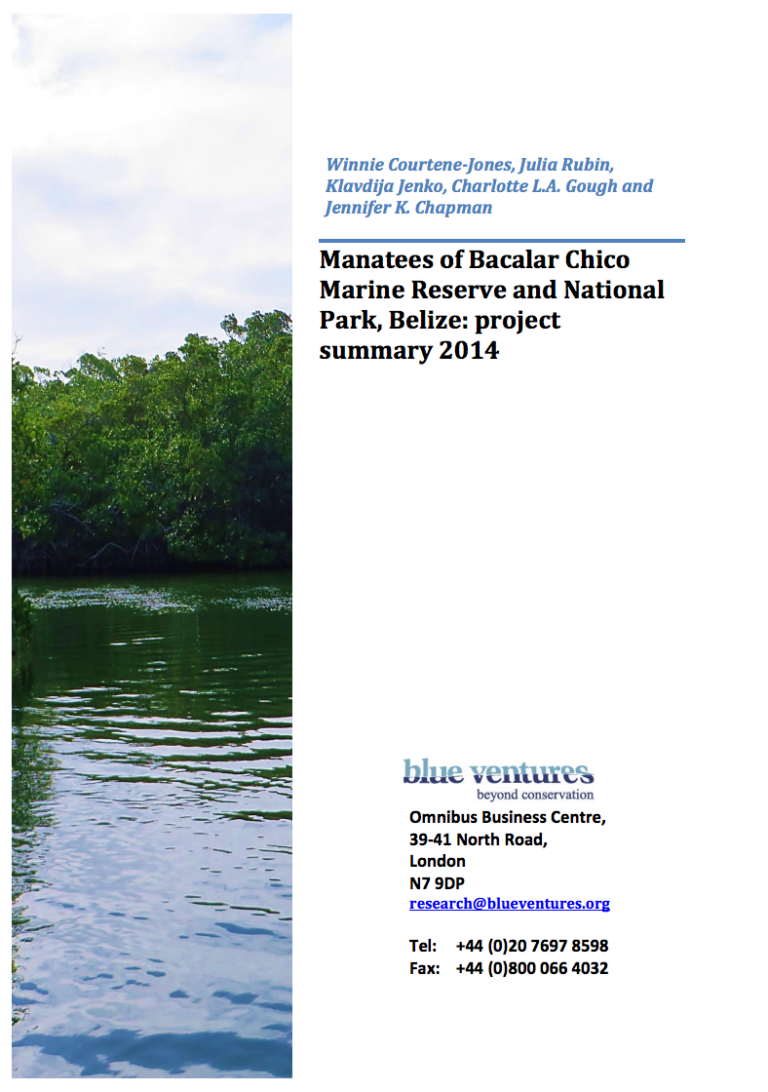Keywords
Antillean manatee, Bacalar Chico, mangroves, monitoring programme, abundance
Executive Summary
Often referred to as ‘sea cows’, the manatee is a large herbivorous marine mammal of the Order Sirenia, which includes both manatees and dugongs. There are three species of manatee: the South American manatee, found in the Amazon Basin, West African manatee, found in West Africa, and the West Indian manatee, found in the Caribbean Sea and Gulf of Mexico. Manatee populations are affected by environmental fluctuations, natural disasters and disease, as well as anthropogenic threats. These threats pose a major risk to the survival of this species and as such all three species of manatees are listed as Vulnerable on the IUCN Red List of Threatened Species. The Antillean manatee (Trichechus manatus manatus), a subspecies of the West Indian manatee, has been identified as a priority protected species of regional concern across its extant range, which includes Western and Southern Gulf of Mexico, Central America, and NW South America west of the Lesser Antilles. The Antillean manatee is present year-round in Bacalar Chico Marine Reserve and National Park (BCMRNP), located in Ambergris Caye, Belize. There is already substantial development on southern Ambergris Caye and further development is planned for areas adjacent to and nested within BCMRNP, presenting potential threats to manatees through development-related impacts, such as habitat degradation, pollution, and increased boat traffic. Blue Ventures’ Bacalar Chico Manatee Monitoring Programme aims to provide information on the abundance of manatees using the marine reserve, their spatial and temporal variations in distribution, habitat preferences and use patterns. During the first year of data collection (2014), a total of ten individual manatees were observed during surveys. The results of the data show that there is no statistical difference in manatee sightings per unit effort (SPUE) or manatee abundance between seasons. However, it is evident that specific areas within the mangroves had higher manatee sighting frequency, where they were observed year-round, indicating that these areas of mangrove are important sites for the species. Salinity and species composition of benthic vegetation also did not have a significant effect on manatee abundance as far as can be determined by the 2014 data. It is recommended that these transects continue to be surveyed for a further four years producing a five year data set, which will provide further clarification on seasonal differences and habitat use trends. Once key areas have been identified for the Antillean manatee in BCMRNP, local management strategies can be implemented to ensure that BCMRNP remains a stronghold for the Antillean manatee.

















